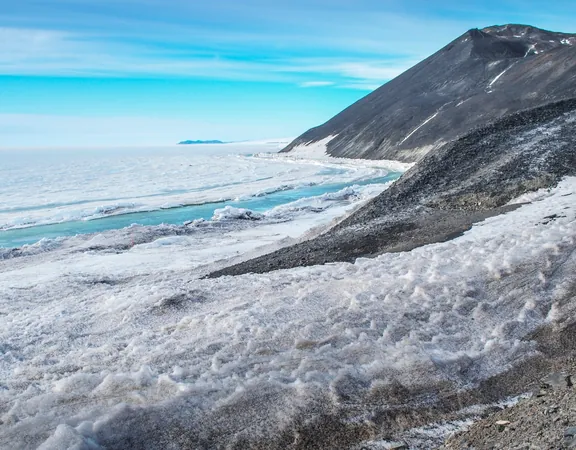
Frozen Giants: How Antarctic Algae Once Cooled Our Planet and Their Troubling Disappearance
2025-09-02
Author: Wei
The Power of Invisible Helpers
Though out of sight, microscopic Antarctic algae have long wielded enormous influence on our planet’s climate. Around 14,000 years ago, these tiny organisms played a pivotal role in cooling Earth by absorbing vast amounts of carbon dioxide—a major contributor to global warming.
Unlocking Ancient Climate Secrets
Recent research has finally unveiled how this algae, known as Phaeocystis, managed to slow the warming of the Earth during a critical period known as the Antarctic Cold Reversal. During this time, while the rest of the planet began warming after the last ice age, something extraordinary happened in the Southern Hemisphere: winter saw rapid expansion of sea ice, which melted quickly in spring.
This melting created a nutrient-rich haven in the Southern Ocean, allowing Phaeocystis to thrive as it devoured carbon dioxide and stored it deep in the marine ecosystem. Previously, scientists were baffled, finding no trace of Phaeocystis in fossil records. However, a breakthrough method using ancient DNA analysis has now illuminated this hidden chapter of Earth’s climate history.
Revealing the Past with Ancient DNA
Researchers from the Alfred Wegener Institute in Germany made waves by studying sediment cores from nearly 2,000 feet below the Bransfield Strait near Antarctica. These cores provide snapshots of oceanic life stretching back 14,000 years. Within this sediment, the team discovered genetic traces of Phaeocystis, marking the algae's significant contribution to carbon reduction during a period of extensive sea ice coverage.
A Stark Warning: The Future of Phaeocystis
Despite their historic role in cooling the planet, these algae now face an existential crisis. Antarctic sea ice is disappearing at an alarming rate, jeopardizing the conditions that once supported their explosive growth. This decline poses threats not only to the algae themselves but also to the entire marine food web, which relies on them as a fundamental food source.
In addition, Phaeocystis has a unique ability to pull carbon deep into the ocean, a vital function that, if impaired, could lead to increased atmospheric carbon and accelerate global warming. Alarmingly, these algae also release dimethyl sulfide (DMS), which plays a crucial role in cloud formation. A decrease in algae could mean fewer clouds, leading to even more solar radiation trapped by the Earth.
Lessons for the Future
This groundbreaking study underlines the crucial need for innovative approaches in climate science. By merging geological analysis with DNA technology, researchers are piecing together how the ocean interacts with climate systems—and how these dynamics may evolve.
As we strive to predict future climate shifts, understanding the biological networks that regulate our environment, especially those as vital as algae, becomes essential. Their story is not just an echo of the past, but a warning for what lies ahead.
This significant research was published in the journal Nature Geoscience, marking a crucial step in unraveling the complex interrelations between marine ecosystems and climate change.





 Brasil (PT)
Brasil (PT)
 Canada (EN)
Canada (EN)
 Chile (ES)
Chile (ES)
 Česko (CS)
Česko (CS)
 대한민국 (KO)
대한민국 (KO)
 España (ES)
España (ES)
 France (FR)
France (FR)
 Hong Kong (EN)
Hong Kong (EN)
 Italia (IT)
Italia (IT)
 日本 (JA)
日本 (JA)
 Magyarország (HU)
Magyarország (HU)
 Norge (NO)
Norge (NO)
 Polska (PL)
Polska (PL)
 Schweiz (DE)
Schweiz (DE)
 Singapore (EN)
Singapore (EN)
 Sverige (SV)
Sverige (SV)
 Suomi (FI)
Suomi (FI)
 Türkiye (TR)
Türkiye (TR)
 الإمارات العربية المتحدة (AR)
الإمارات العربية المتحدة (AR)